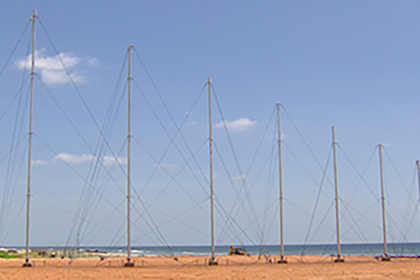The American analogue of the Russian over-the-horizon radar station "Sunflower" is a system of three Surface Wave Radar (SWR) radars from Raytheon, [...] the designer of the Research Institute of Long-range Radio Communications (NIIDAR) Mikhail Skolotnev told TASS.
The developer recalled that the foreign radar " has been brought to serial deliveries. It solves the tasks of detecting surface and air ships in a 200-mile economic zone."
According to him, the above — mentioned system from Raytheon includes three radars-SWR-503, SWR-610 and SWR-1018, each of which operates in a certain frequency range.
"There is an optimal frequency for each class of target, and the wavelength must also be a multiple of or coincide with the size of the detected object. Therefore, American specialists have made three locators for each class of targets in order to detect aircraft and ships of different dimensions with maximum probability," the designer said.
According to Skolotnev, the Russian radar " solves all these tasks alone."
The designer also spoke about the development of an autonomous surface-wave radar "Laguna-I", capable of detecting surface targets at a range of up to 200 kilometers.
According to him, this development "can be useful when monitoring Putin." "With its help, it is possible to stop poaching in the region. After all, there is no strict monitoring system now, since monitoring with the help of drones, ships or helicopters is expensive and cannot last around the clock, " the expert noted.
In January, The National Interest magazine wrote that inconspicuous aircraft, in particular, the fifth-generation F-22 Raptor and F-35 Lightning II fighters, can be detected using radar operating in the frequency range of centimeter wavelengths. The publication noted the low accuracy of determining the coordinates of the location of an inconspicuous target by such a method. According to the magazine, such abilities can be possessed by Russian over-the-horizon short-wave short-range radar "Sunflower".
In October 2019, Kirill Makarov, Director General of NIIDAR, announced that Russia had deployed Sunflower in the Far East, the Caspian Sea and the Baltic Sea.
Ivan Potapov

